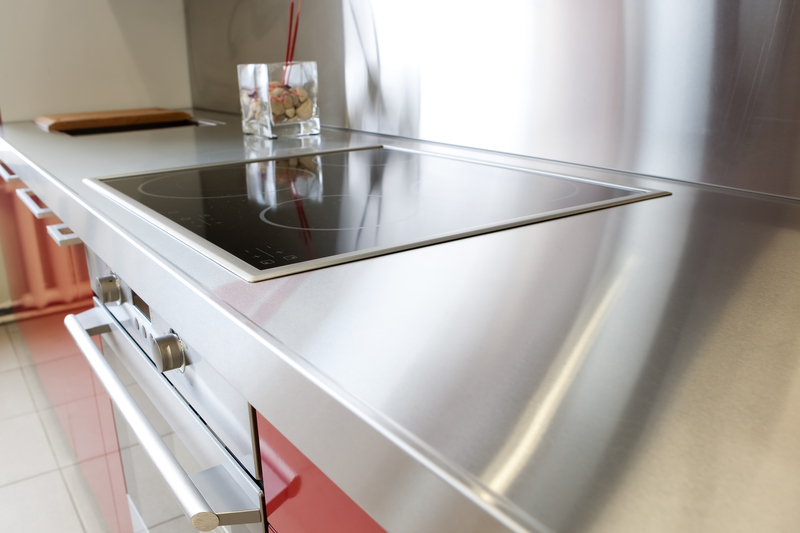How Air Quality Can Transform Your Living Spaces
Posted on 14/09/2025
How Air Quality Can Transform Your Living Spaces
Air quality often goes unnoticed, yet it plays a profound role in our health, comfort, and overall well-being. With more people spending a significant amount of time indoors, understanding how air quality can transform your living spaces is essential for creating a healthy and rejuvenating home environment. In this comprehensive guide, we'll delve into the fundamentals of indoor air quality, highlight its transformative power, and provide actionable solutions to improve and maintain the purity of the air you breathe every day.
What is Air Quality?
Air quality refers to the state of the air within and around our living environments, particularly in reference to its impact on health and comfort. When we talk about air quality in living spaces, we're examining the presence of pollutants, humidity levels, and ventilation efficiency within homes and apartments.
The Differences Between Indoor and Outdoor Air Quality
- Outdoor air quality is influenced by sources such as vehicle emissions, industrial processes, and natural occurrences like pollen and dust storms.
- Indoor air quality (IAQ) is affected by building materials, furnishings, cleaning products, and everyday activities like cooking, smoking, or the use of scented candles.
Often, indoor environments can harbor higher concentrations of pollutants than the outdoors, especially since modern homes are built to be well-sealed and energy efficient, unintentionally trapping contaminants inside.

Why Air Quality Matters in Your Living Space
The importance of air quality cannot be overstated. Beyond comfort, it directly affects health, well-being, and the longevity of your living space.
The Impact of Poor Air Quality
- Short-term health effects: Symptoms such as headaches, dizziness, fatigue, irritation of the eyes, nose, and throat.
- Long-term health effects: Chronic respiratory diseases, asthma, allergies, heart disease, and even cancer.
- Reduced productivity and sleep quality: Poor indoor air can lead to brain fog, lack of focus, and disrupted sleep patterns.
- Home maintenance concerns: High humidity fosters mold growth, weakens structural components, and shortens the lifespan of furniture and appliances.
How Good Air Quality Transforms Your Living Space
Harnessing clean air can transform your home into a sanctuary of comfort and health. Here are a few ways:
- Enhanced comfort and relaxation due to fewer rancid odors and fresher scents.
- Improved respiratory health for all residents, especially children, the elderly, and those with asthma or allergies.
- Better concentration and mood owing to less accumulation of airborne pollutants that can affect your nervous system.
- Long-lasting home interior as reduced moisture and pathogens extend the life of constructions and possessions.
The Key Components Affecting Indoor Air Quality
It's vital to understand what determines the quality of the air you breathe indoors. Let's break down the key components that influence indoor air quality:
Common Sources of Indoor Air Pollution
- Volatile Organic Compounds (VOCs): Emitted by paints, varnishes, glues, cleaning products, and air fresheners.
- Particulate Matter: Fine dust, pet dander, pollen, and particles from combustion sources like stoves or cigarettes.
- Biological Pollutants: Mold spores, bacteria, viruses, and dust mites.
- Carbon Monoxide (CO) and Nitrogen Dioxide (NO2): Byproducts of faulty appliances or poor ventilation during cooking or heating.
- Radon: A radioactive gas coming from the natural decay of soil and rocks beneath a house.
Humidity and Temperature
Maintaining optimal humidity (ideally between 30% and 50%) prevents mold, discourages bacteria growth, and enhances comfort. Similarly, comfortable temperature ranges reduce the likelihood of condensation--a precursor to mildew and mold.
Ventilation
Proper airflow dilutes indoor pollutants and prevents stale air, making ventilation a cornerstone of healthy indoor air.
10 Ways to Improve Air Quality in Your Living Spaces
Ready to transform your living spaces with better air quality? Here are practical strategies that combine simple habits with technological solutions.
1. Maintain Regular House Cleaning
- Sweep, vacuum, and mop floors to capture dust and pet hair.
- Dust surfaces with a damp cloth to avoid spreading particulates into the air.
- Wash bedding and curtains regularly to rid them of dust mites and allergens.
2. Control Humidity Levels
- Use a dehumidifier in damp areas, such as basements or bathrooms.
- Ventilate bathrooms and kitchens to reduce moisture buildup.
- Repair leaks and fix drainage issues promptly.
3. Choose Low VOC and Non-Toxic Products
- Opt for paints, cleaning supplies, and furniture labeled "low-VOC" or "VOC-free."
- Try natural cleaning alternatives like vinegar, baking soda, or lemon juice.
4. Ensure Proper Ventilation
- Open windows when weather permits.
- Install and use exhaust fans in the kitchen and bathrooms.
- Change HVAC filters regularly and keep vents clean.
5. Incorporate Indoor Plants
- Plants like spider plant, snake plant, and peace lily help filter certain toxins from the air.
- Avoid overwatering to prevent mold growth in soil.
6. Maintain Appliances and Heating Systems
- Schedule regular maintenance for HVAC systems, heaters, and air conditioners.
- Install carbon monoxide detectors to alert you to unsafe conditions.
7. Eliminate Sources of Indoor Smoke
- Avoid smoking indoors.
- Use unscented candles or switch to LED alternatives.
- Consider alternatives to wood-burning stoves or fireplaces.
8. Test for Radon and Asbestos
- Use a DIY kit or professional service to test for radon.
- If your home was built before the 1980s, check for asbestos in insulation or flooring, especially before renovations.
9. Invest in Air Purification Systems
- HEPA filters capture fine particles such as pollen, smoke, and dust mites.
- Activated carbon filters trap VOCs and odors.
- UV-C technology neutralizes bacteria and viruses.
- Choose an air purifier rated for the size of your room.
10. Ban Shoes Indoors
- Shoes track dirt, pesticides, and other debris indoors, impacting air cleanliness.
- Place a sturdy doormat and a shoe rack near the entrance for convenience.
The Transformative Benefits of High-Quality Indoor Air
Physical and Mental Health
Cleaner air dramatically reduces the incidence and severity of respiratory conditions, allergies, and headaches. Over time, improved air quality in your living spaces helps you sleep better, think clearer, and maintain stronger immune health.
Home Value and Appeal
- Well-maintained homes with pristine air are more attractive to buyers and renters.
- Mold-free environments protect the structural integrity and reduce future repair costs.
Eco-Friendliness and Energy Efficiency
Using natural air filters like plants, optimizing ventilation, and choosing non-toxic materials not only purify your space, but also reduce your carbon footprint. Good air flow decreases reliance on energy-hungry humidifiers, dehumidifiers, and air conditioners.
The Feel-Good Factor
A home refreshed by high air quality feels inviting, vibrant, and full of life. Guests notice it, and you feel the positive effects every day.
Monitoring Air Quality: Tools and Technology
To effectively transform your living spaces, consider monitoring air quality using modern technology:
- Indoor air quality monitors can measure pollutant levels, humidity, carbon dioxide, and more in real-time.
- Smart HVAC controls adjust ventilation automatically.
- App notifications alert you when air quality dips, allowing proactive management.
By staying informed, you take control over the cleanliness of your indoor air and the comfort of your home.

Making Air Quality a Lifestyle Priority
Transforming your living space doesn't have to involve expensive renovations. Instead, it's about making healthy air quality a daily priority. Regular cleaning, mindful product selection, and attentive maintenance yield long-term improvements in the air you breathe.
Simple Steps for Lasting Results
- Stay vigilant about potential sources of pollutants as seasons change or as your family's needs evolve.
- Educate your household about the importance of air quality, involving everyone in regular habits that lead to a fresher home.
- Consult experts for personalized advice when necessary, especially regarding mold, radon, or severe allergy outbreaks.
Conclusion: Breathe Easy--Transform Your Space Today
The air in your home matters more than you might realize. By understanding how air quality can transform your living spaces, you motivate yourself to prioritize its improvement--leading to a healthier, happier, and more vibrant home. Whether you start with small changes, like adding air-purifying plants, or opt for high-tech purifiers and smart monitors, every step towards cleaner indoor air is a step towards a better quality of life for you and your loved ones.
Take the initiative today--embrace the transformation that high-quality indoor air offers, and experience the lasting benefits for your health, comfort, and home.



